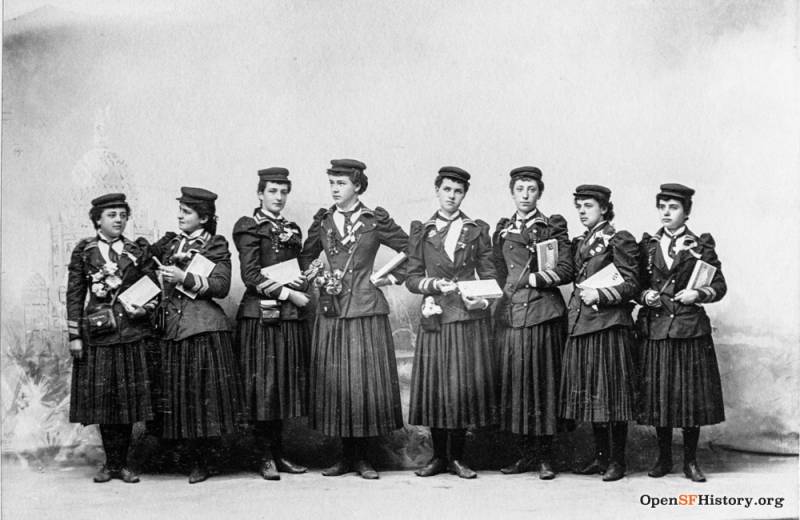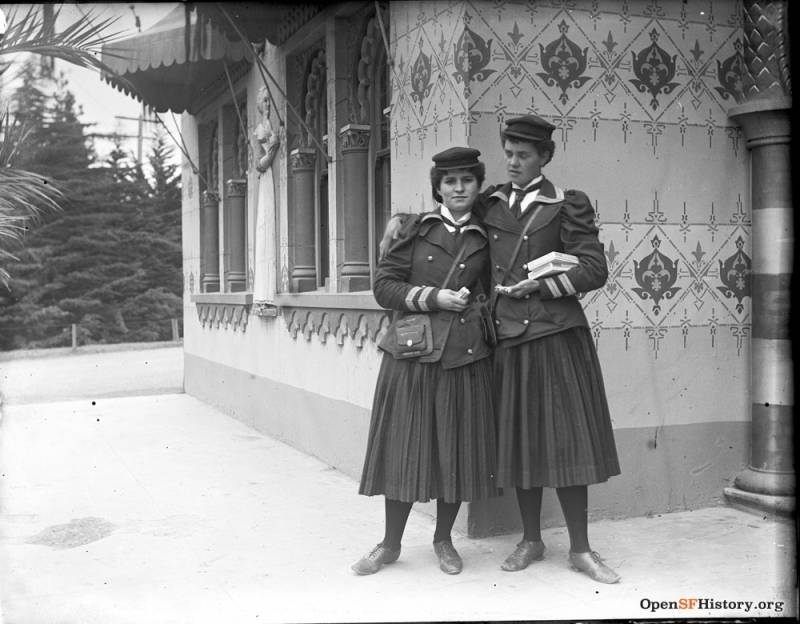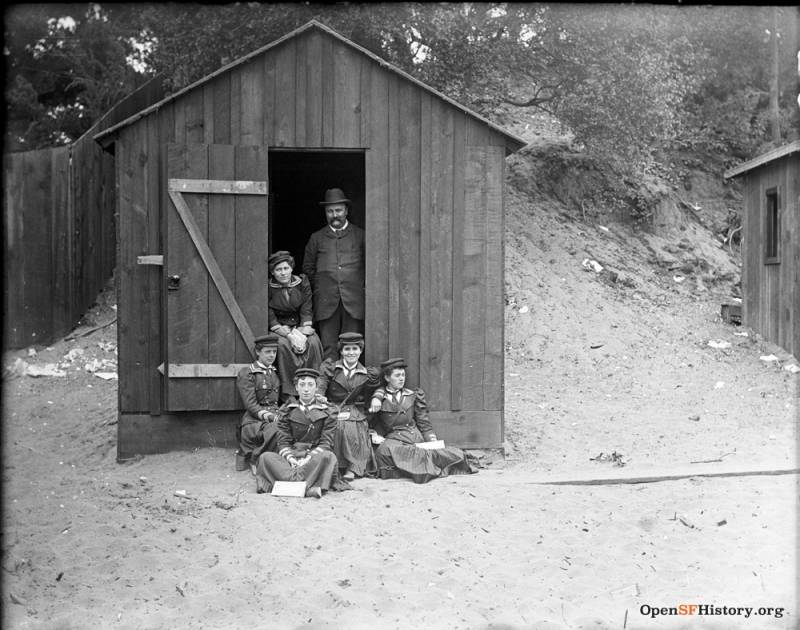In 1894, Golden Gate Park’s Midwinter Fair was the talk of the town. Featuring fairground rides, museums, an ostrich farm and the closest thing San Francisco ever got to an Eiffel Tower, the fair was a raging success with over two million visitors. There was just one element of the five-month exposition, however, that got visitors flustered and flabbergasted: the Gum Girls.
Hired to peddle chewing gum to the fair’s male clientele, the Gum Girls wore matching outfits, traveled in pairs, and were in the habit of whistling “Two Little Girls in Blue” any time they made a sale. Which was often. Chewing gum had only recently been transformed from its chicle-based roots into something fun and fruity. (The first fruit-flavored gum, Kis-Me, hit markets in 1886; Wrigley introduced Juicy Fruit just one year before the fair.) The song, penned by Charles Graham in 1893, became a near-constant refrain at the fair—particularly on the Midway, where the Gum Girls did most of their business.
As quaint as this all sounds, the Gum Girls were controversial figures from the very first day of the Midwinter Fair. For one, they flirted shamelessly with their male customers, largely motivated by the fact that they were working on commission. More scandalous still, they wore calf-length pleated skirts that exposed their ankles. That they also wore thick black stockings—meaning there was no bare flesh on display—did not quell the hullaballoo surrounding their revealing (by Victorian standards) attire.





